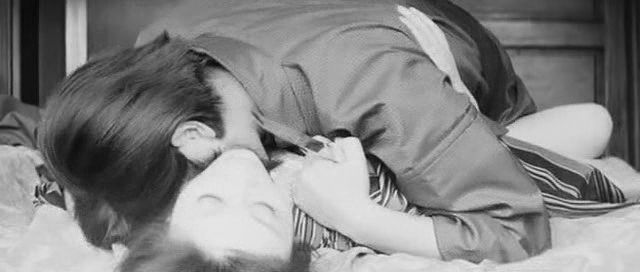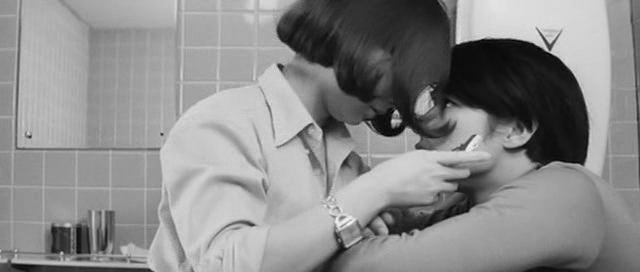

| Home Events Mission FOFFBlog FOFFGames Film Calendar Sign Up for More Information Make a Donation Film-Friendly Links |
 In a radically Brechtian style, "Eros" relates the "true" story of 1910's and 20's legendary anarchist Sakae Osugi, the most famous radical agitator of his time, as well as the founder of Japan's first school dedicated to teaching Esperanto, the language invented in the cause of Utopian world reconciliation. This wildly popular firebrand (described as "a kind of politicized Mick Jagger-in-his-prime") was the mastermind behind the Rice Riots, which brought approximately 10 million Japanese to the edge of rebellion in what's been called "the greatest uprising in modern Japanese history". His services to humanity were rewarded with the #1 slot on the military police (the Kempeitai)'s death-list. After a May Day speech in Paris proved so rousing it led to his arrest and deportation back to Japan, the Kempeitai had their chance. Following the Great Kanto Earthquake, under the pretext of quelling potential anarchist uprisings, Osugi, his lover Noe Ito, and his six-year-old nephew were arrested and murdered. This became known as the "Amakasu Incident" (the later exploits of Lieutenant Amakasu, the officer in charge of these activities, were portrayed by Riyuchi Sakamoto in Bernardo Bertolucci's "The Last Emperor"). Rather than focussing on the grand stage of politics, however, Yoshida's stylistically playful work centers on the intimate politics between Osugi, his wife, and his two lovers. Refusing to respect conventional narrative constraints, the film charges across barriers of time and genre, interweaving Osugi's story with one of latter-day students embarked on a research project into the anarchist's ideas regarding free love. Through these colliding quests of self-discovery, "Eros" humorously delves into the question of whether unlimited passion can be the source of ultimate human liberation.... A film of epic proportions, "Eros" features some of the most famously beautiful black-and-white cinematography in the history of cinema. "Masterpiece... The finest cinematic reflection I've seen on histrionic death." -Noel Burch "Masterpiece." -Tadao Sato
Not on video!
 Since this screening is not a presentation of the Pacific Film Archive, it does not appear in their calendar or in any of their publicity. Nevertheless, the show will go on! |